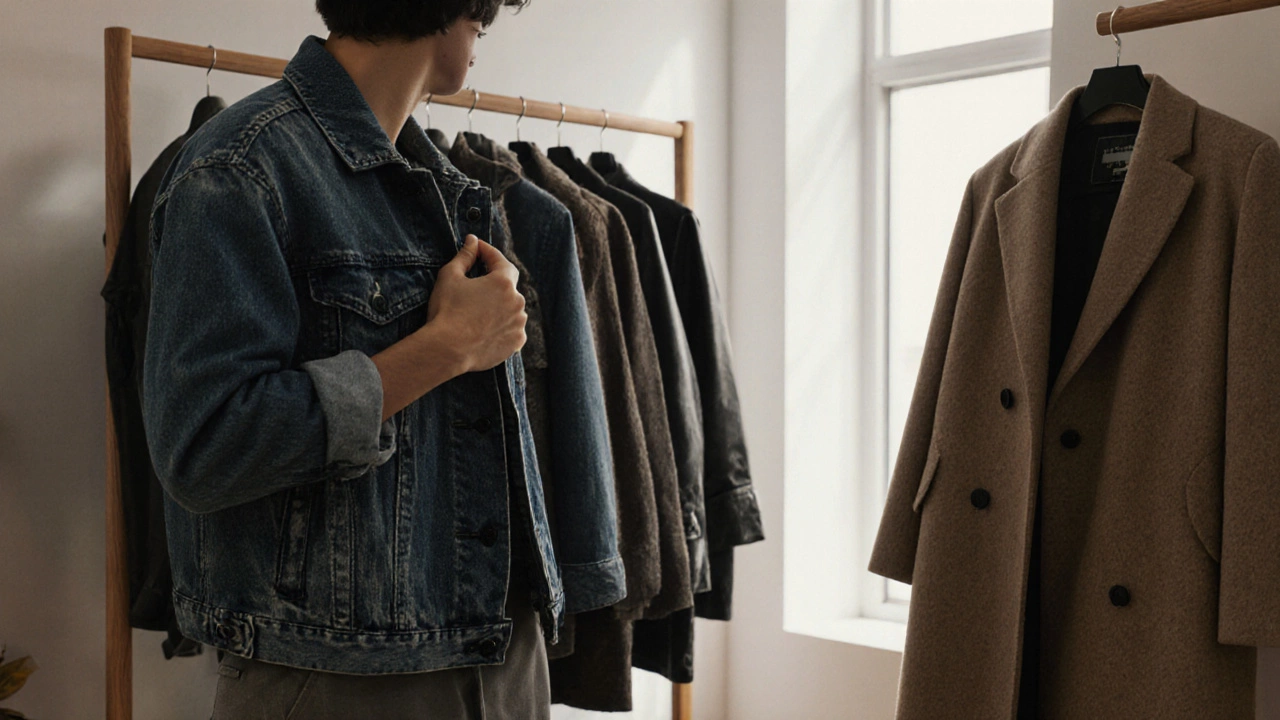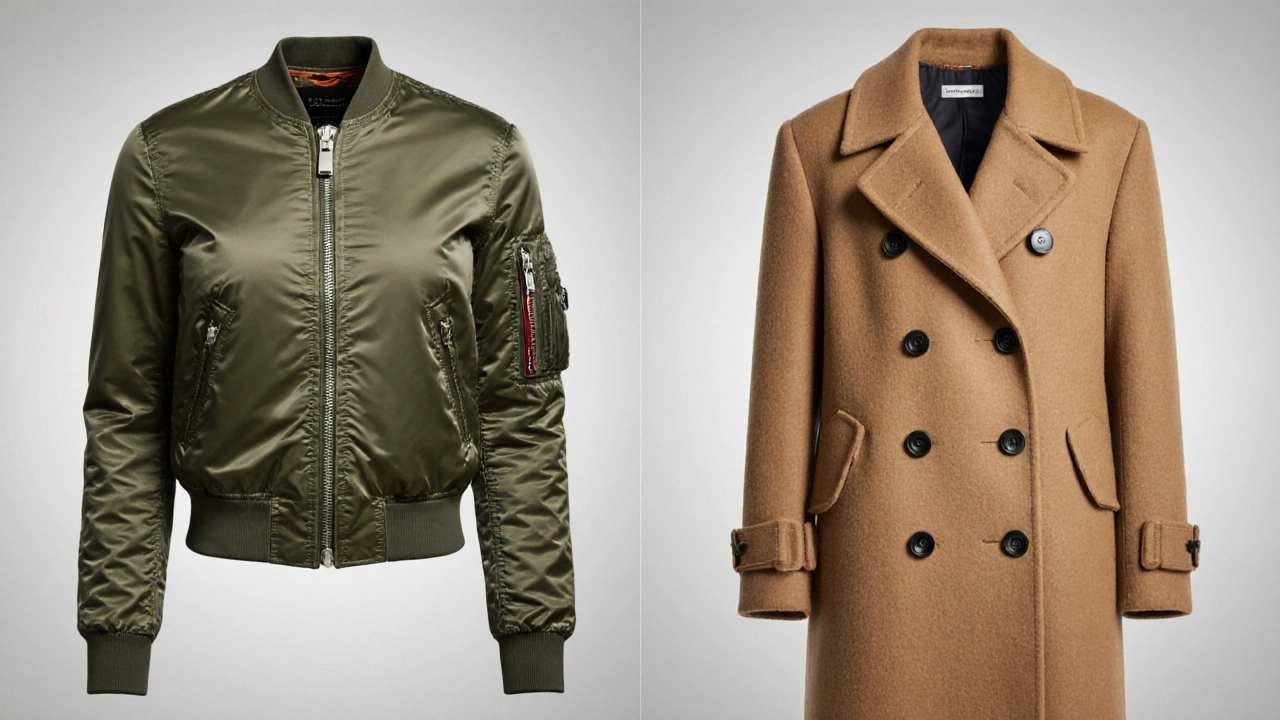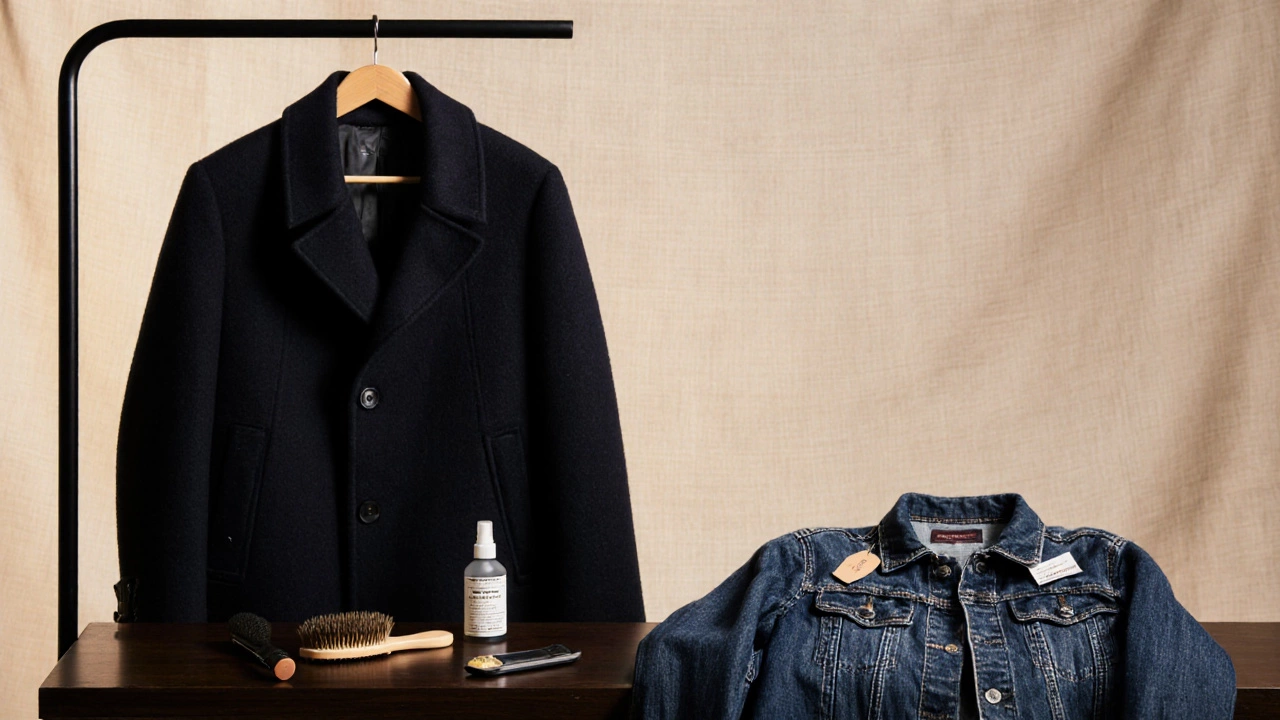Jacket vs Coat: Key Differences Explained

Jacket vs Coat Selector
Jacket
Shorter outerwear, typically waist to hip length, ideal for mild to moderate temperatures.
- Lightweight materials
- Quick removal options
- Sleek fit
- Good for layering
Coat
Longer outerwear, reaching mid-thigh to ankle, designed for substantial warmth and protection.
- Heavy insulation
- Waterproof features
- Roomy fit
- Formal styling
Select Your Needs
Your selections will determine whether a jacket or coat suits your needs best. Click "Determine My Outerwear Choice" to see the recommendation.
Ever stood in front of a rack, wondering whether you need a jacket is a short‑to‑mid length outer garment designed for light to moderate warmth or a coat is a longer, heavier outerwear piece built for serious insulation? Understanding the practical gaps between the two can save you money, space, and a wardrobe headache. Below we break down the essential traits, when each shines, and how to pick the right piece for your climate and style.
What Makes a Jacket?
A jacket is a shorter outerwear item, typically ending at the waist or hips, that offers a balance of style and light protection. Common materials include denim, leather, nylon, and lightweight wool. Jackets often feature zippers, snap buttons, or simple open fronts, allowing quick removal. They are built for seasons where a sweater may be too warm but a full coat feels bulky-think spring, early autumn, or milder winter days.
Key attributes of a jacket:
- Length: waist to hip.
- Insulation: thin pads, fleece, or none.
- Materials: denim, leather, canvas, polyester.
- Fastenings: zippers, snaps, buttons, pull‑overs.
- Fit: often tailored for a sleek silhouette.
What Makes a Coat?
A coat is a longer outerwear garment that usually reaches the thighs or below, designed for substantial warmth and protection. Classic examples include trench coats, pea coats, parkas, and overcoats. Materials range from heavy wool, cashmere, to insulated synthetics. Coats typically incorporate stronger seams, larger collars, and substantial linings to guard against cold, wind, and rain.
Core characteristics of a coat:
- Length: mid‑thigh to ankle.
- Insulation: thick padding, down, or heavy wool.
- Materials: wool, cashmere, insulated nylon, Gore‑Tex.
- Fastenings: double‑breasted buttons, belted closures, hidden zippers.
- Fit: may be roomier for layering.

Core Differences at a Glance
Both jackets and coats fall under the broader category of outerwear is a any garment worn over everyday clothing for protection against the elements. Yet they diverge in several practical dimensions:
| Aspect | Jacket | Coat |
|---|---|---|
| Typical Length | Waist‑to‑hip | Thigh‑to‑ankle |
| Primary Insulation | Light fleece, quilted padding, or none | Down fill, heavy wool, synthetic insulation |
| Seasonal Use | Spring, early fall, mild winter | Cold winter, rainy days, formal occasions |
| Material Examples | Denim, leather, lightweight polyester | Wool, cashmere, Gore‑Tex, insulated nylon |
| Typical Fastening | Zipper, snap, button, pull‑over | Buttoned, belted, hidden zip, storm flap |
| Fit | Often slim, designed for layering thin pieces | Roomier, accommodates sweaters, scarves |
How to Choose the Right Piece for Your Climate
Think of insulation is a the material that traps heat inside the garment as the decisive factor. In Melbourne’s fluctuating weather, you might find yourself needing a lightweight jacket for a breezy afternoon and a coat for a sudden cold snap.
Guideline:
- Check the average low temperature. Below 5°C (41°F) usually calls for a coat.
- Assess wind and rain. Waterproof or wind‑proof features lean toward a coat.
- Consider activity level. High‑energy outings (e.g., hiking) can tolerate a jacket even in cooler air.
- Plan for layering. If you prefer thick sweaters, a coat gives breathing room; a jacket works with lighter layers.
Style and Occasion: When to Dress Up or Down
Both garments can be styled up or down, but tradition shapes expectations. A tailored wool coat pairs well with business attire, while a bomber jacket adds edge to a casual tee. If you’re heading to a wedding, a sleek overcoat signals formality; a denim jacket is better suited for a weekend brunch.
Key style points:
- Fit is a how closely the garment conforms to the body matters - slim fits look sharp, relaxed fits offer comfort.
- Fastening is a the method used to close the garment can set tone - double‑breasted buttons feel classic, zippers feel sportier.
- Color palette: neutral coats (black, navy, camel) are versatile; jackets can be bold (olive, burgundy, patterned).

Care and Maintenance Tips
Maintenance prolongs life and keeps you looking fresh. Follow these basics:
- Jackets: most are machine‑washable on a gentle cycle. Spot‑clean leather or suede with a specialized cleaner.
- Coats: dry‑clean wool and cashmere coats; remove lint with a soft brush. For down coats, tumble dry on low with clean tennis balls to restore loft.
- Store on wide padded hangers to maintain shape. Use breathable garment bags rather than plastic to avoid mildew.
Quick Reference Checklist
- Length needed? - Choose jacket for waist‑to‑hip, coat for thigh‑to‑ankle.
- Temperature range? - Below 5°C → coat; 5‑15°C → jacket.
- Activity level? - High movement → jacket; static events → coat.
- Formality? - Business or formal → coat; casual or street style → jacket.
- Maintenance willingness? - Easy wash → jacket; dry‑clean care → coat.
Frequently Asked Questions
Can I wear a jacket in winter?
Yes, if you layer a warm sweater, scarf, and perhaps an insulated vest underneath. Choose a jacket with fleece lining or light down for extra heat.
What’s the difference between a trench coat and a raincoat?
A trench coat is typically made from water‑resistant cotton gabardine, features double‑breasted buttons, a belt, and a longer silhouette. A raincoat focuses purely on waterproof performance, often using PVC or coated nylon, and may lack the classic tailoring details.
Do jackets have pockets?
Most jackets include at least two front pockets; some styles add interior zip pockets or chest pockets for added utility.
How often should I dry‑clean a wool coat?
Plan a dry‑cleaning session once or twice a year, unless the coat gets visibly soiled. Spot‑clean stains with a damp cloth to extend the intervals.
Is a bomber jacket considered a jacket or a coat?
A bomber is a jacket. It sits at the waist, has a fitted cuff, and offers light insulation-classic jacket traits.
- Oct, 9 2025
- Violet Greenfield
- 0
- Permalink
- Tags:
- jacket
- coat
- outerwear
- fashion
- difference
Written by Violet Greenfield
View all posts by: Violet Greenfield